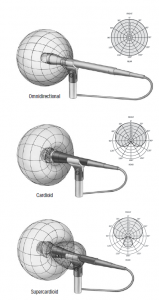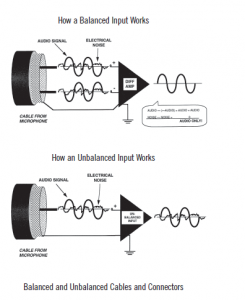Home > BLOG CENTER > Microphones in conference call system
Home > BLOG CENTER > Microphones in conference call system
As the primary sound source and first link in the audio chain, the microphone is critical to the overall quality of a sound system. Manufacturers design mic models that are optimized for specific tasks, so selecting the right one starts with a knowledge of the specific application involved, considering both the sound source and its destination. In meeting and conference systems, the primary microphone usage is for human voice, which allows us to bypass a lengthy discussion of mics for musical instruments. Vocal mics come in a wide array of form factors, and are differentiated by five primary characteristics.
Operating Principle
This refers to the type of “engine” driving the microphone, turning the sound waves into a small electrical voltage. In meetings and conferences, almost all mics are either dynamic or condenser type. Dynamic microphones are rugged and reliable, relatively economical and do not require a power source. Condensers are more complex in design and typically more sensitive to quiet sounds, requiring a power source to operate. They have the advantage of
being easier to design with flat frequency response, and can be made very small without significant loss of performance.
Frequency Response
This is an inherently deceptive microphone metric, because a “good” response graph is nearly impossible to identify. While equal response at all frequencies – called a flat or uncolored response – would seem to be an obvious goal, that sort of microphone is better suited to wide-range music instruments like pianos.
Vocal microphones are usually designed with a shaped, or tailored, response. The idea behind a shaped response is to enhance the sound by smoothly emphasizing the desired frequencies (in our case, the upper midrange for vocals)
while minimizing frequencies outside the vocal range.
A common question is whether men and women require different microphone models. In general, the answer for the spoken word is no. While the sexes do differ slightly in their average frequency ranges, both are well within the
frequency range of a typical vocal microphone.

Directionality
This is how the microphone responds to sound from different directions, also called its polar response, and is extremely important in sound reinforcement systems. The two main types are omnidirectional (“omni”), which responds equally to sound from anywhere; and unidirectional
(“uni”), which is most sensitive to sound from only one direction. For sound systems (with mics and loudspeakers in the same room), unidirectional microphones have definite advantages – basically, because they can be aimed.
Unidirectional microphones have maximum pick-up in one specific direction (called “on axis”), with increasingly less sensitivity as the angle of incidence gets further off-axis. Significantly, there is also an angle of minimum sensitivity,
called the null point.
There are several varieties of unidirectional microphones,with progressively narrower coverage angles and different null points. The most common form of unidirectional mic is cardioid, which combines a wide effective coverage area (about 130 degrees) for maximum on-axis pickup, with a deep null point at 180 degrees, for rejecting sound directly behind the mic. Other types of unidirectional polar patterns offer progressively narrower coverage angles and different directionality for their null points. Bi-directional microphones also exist, but are rarely used in meeting scenarios.
By pointing it directly at the desired sound source, a unidirectional microphone picks up more of the intended sound and less unwanted ambient sound. Off-axis sound sources are naturally quieter than the presenter, while sources aimed at the mic’s null point will be virtually inaudible through the sound system. Well-planned microphone positioning can minimize the pickup of unwanted sound sources (other presenters, rustling papers, loudspeakers, etc.), thus enhancing sound quality while reducing the possibility of feedback. Insuring the null point of a unidirectional microphone is directed at loudspeakers can also improve gain before feedback in sound reinforcement.
Because they “hear” sound from all directions equally and thus cannot be aimed, omnidirectional mics are more prone to feedback, and thus are seldom used in meeting facilities with live sound reinforcement systems. Omni
microphones are often used when no loudspeakers are active, such as a recording or broadcast studio.

Electrical Output
The output of a microphone is a small electrical signal. For effective operation, the output needs to be matched to the input specifications of the sound system it is being plugged into. To compare between mics, the output level is measured when the mic is confronted with a known reference sound pressure level. This output, measured in millivolts, is called sensitivity.
Microphone outputs fall into two categories, depending on their electrical resistance, called impedance. Low impedance, or low-Z, microphones, are usually rated between 150 and 600 ohms, and are generally found in professional applications. High impedance (high-Z) microphones are typically rated at 10,000 ohms impedance or more, which is common in consumer gear.
Another factor is the microphone’s wiring scheme, which might be balanced or unbalanced. Pro audio gear tends to be balanced, which means that the output signal is carried on two shielded conductors of opposite polarity. This helps reject noise and hum in the cable through common-mode rejection at the mixer input, leaving the original mic signal intact. An unbalanced microphone output uses just one conductor and a shield, making it
susceptible to noise and hum picked up by the cable.

40088 41166info@meeteasy.com.hk
3/F,Building#10, Jiu Xiang Ling Industrial Zone,Xili
Nanshan District, Shenzhen, 518055, China